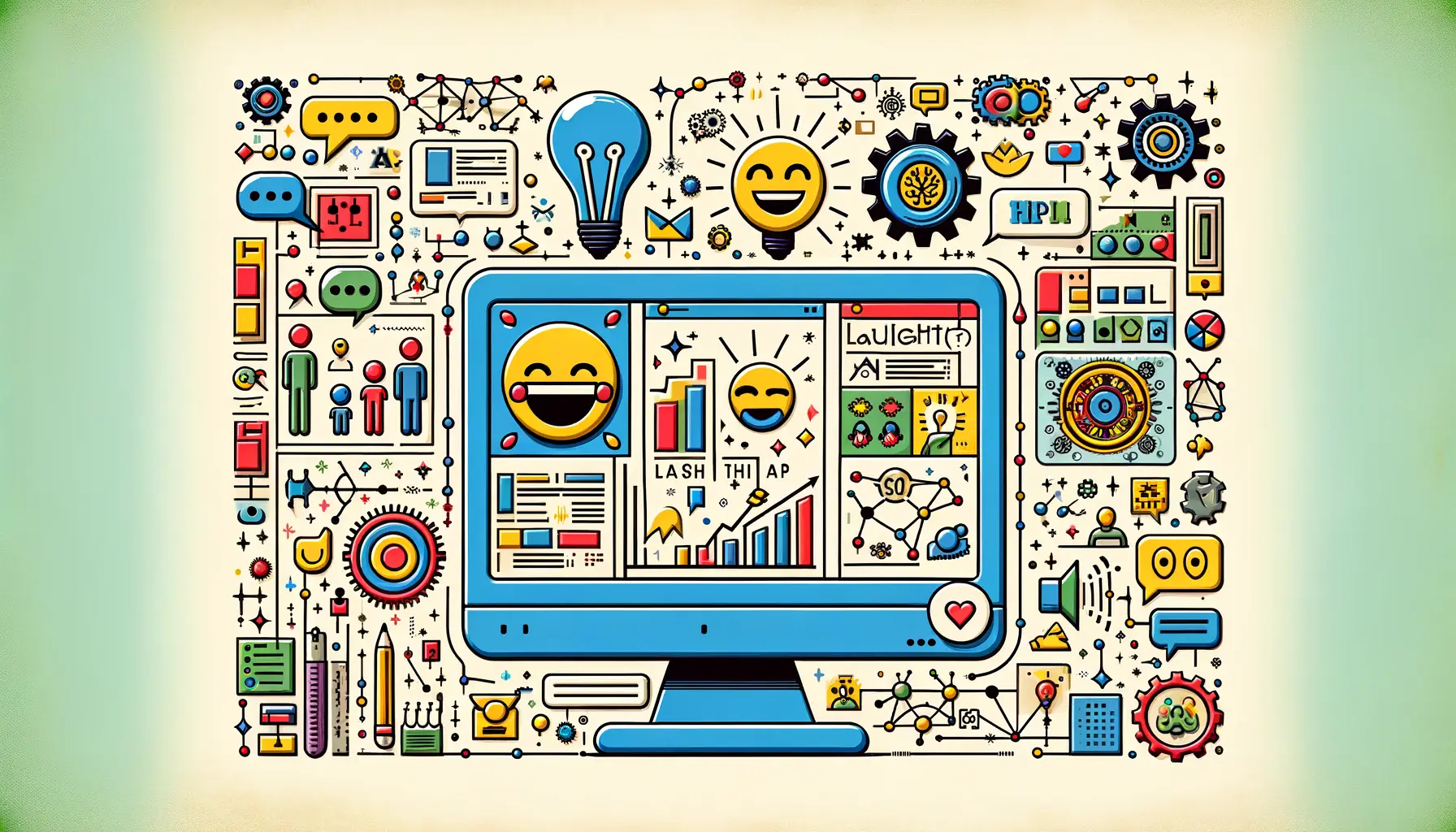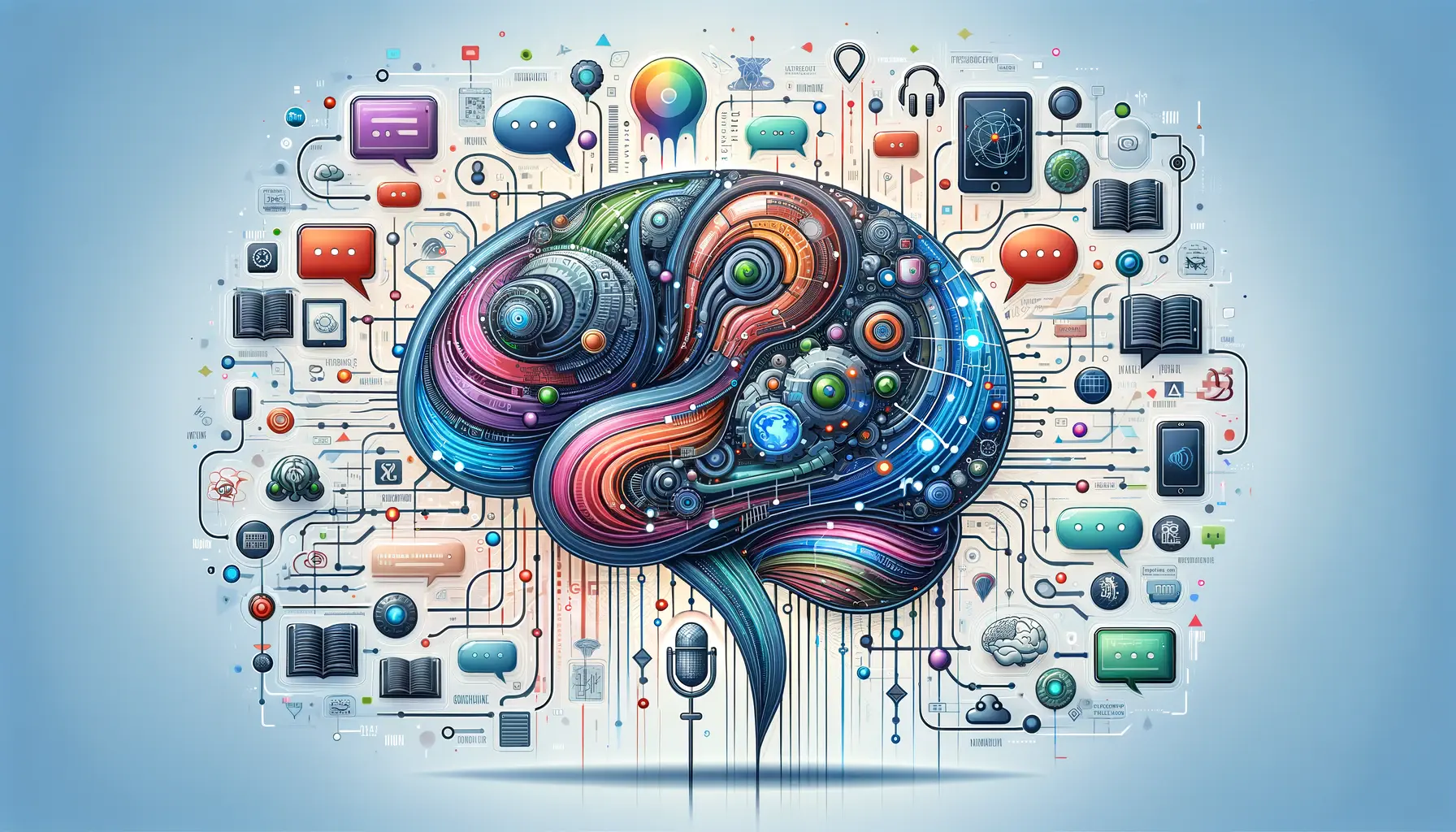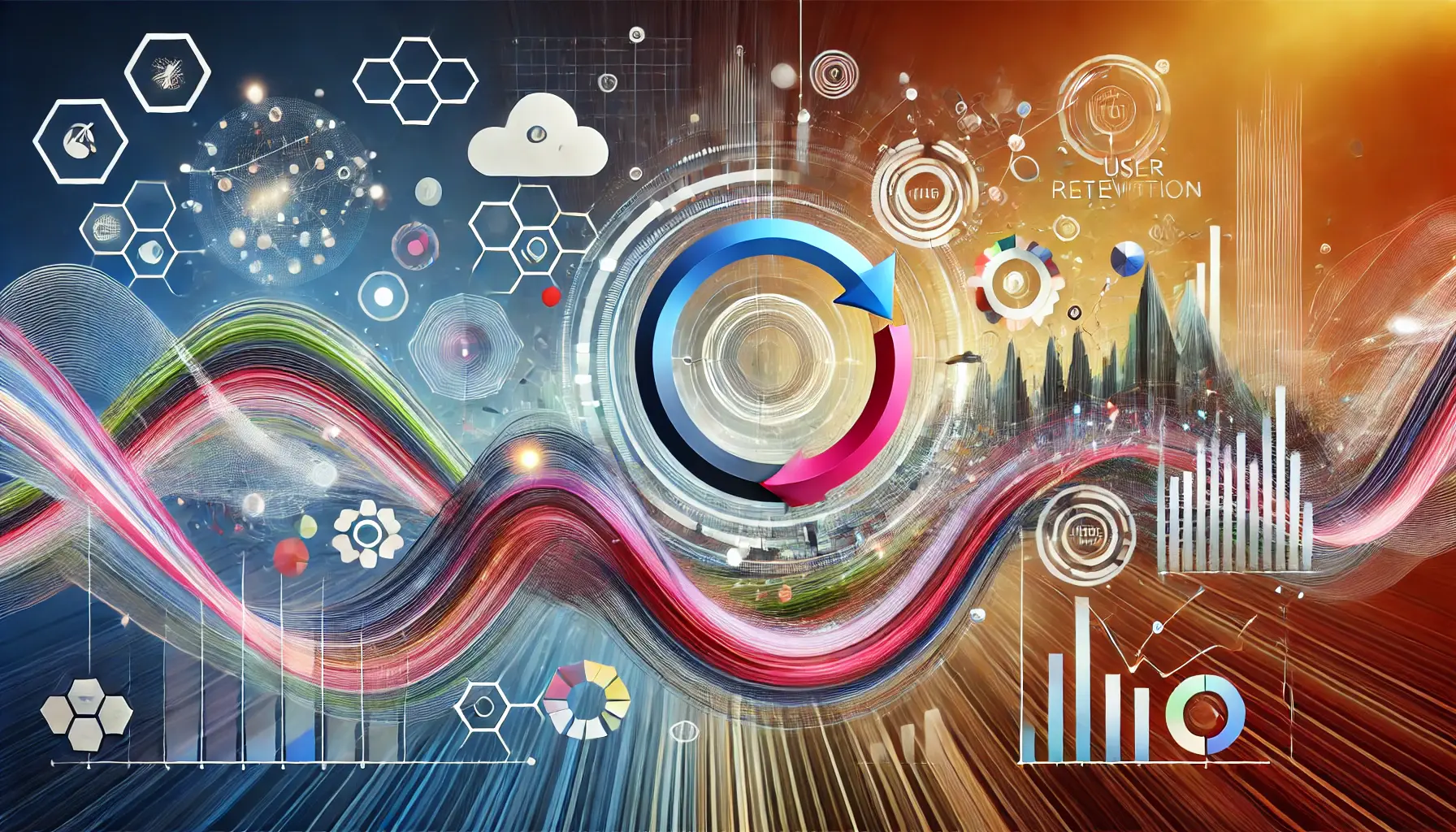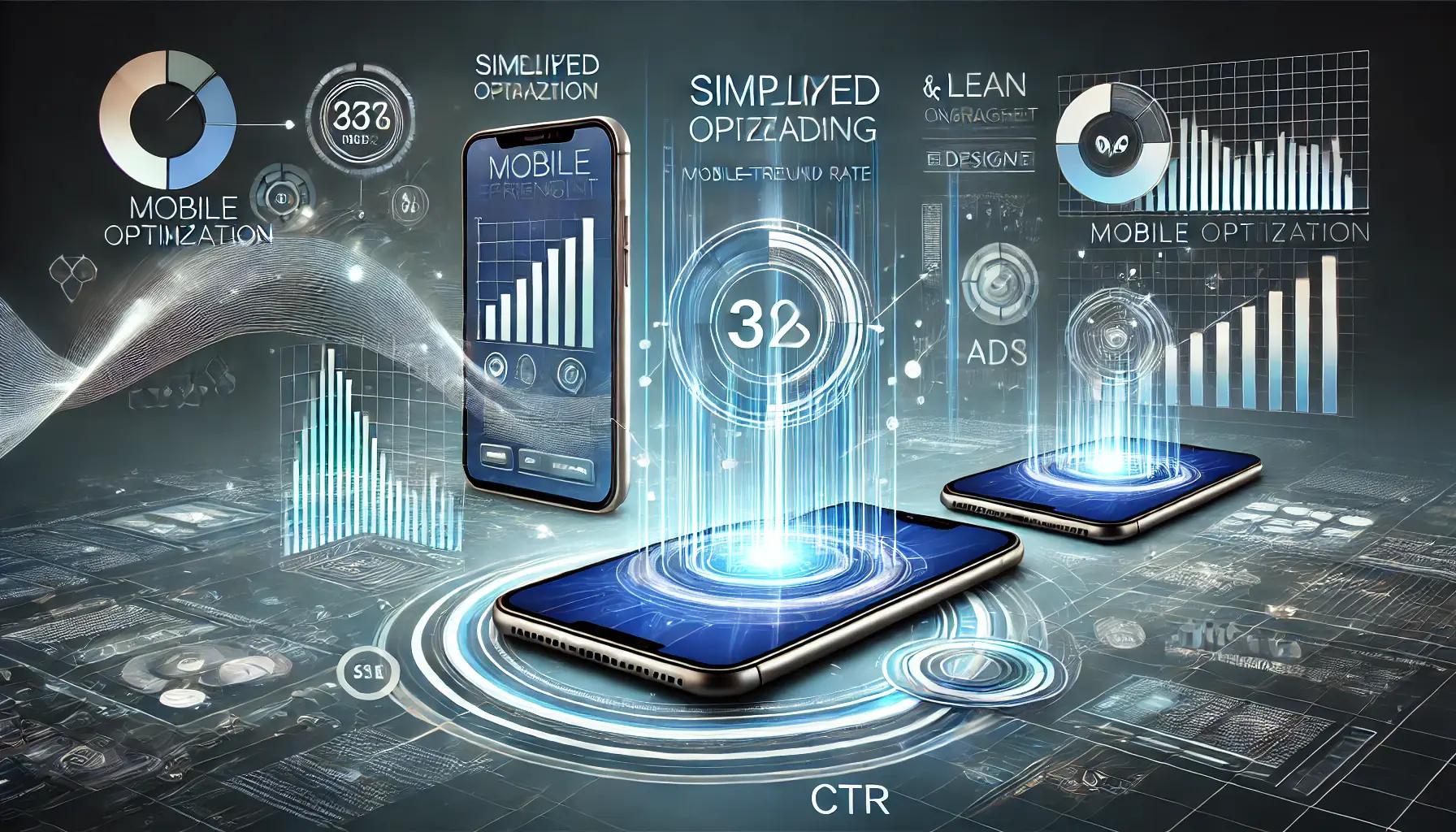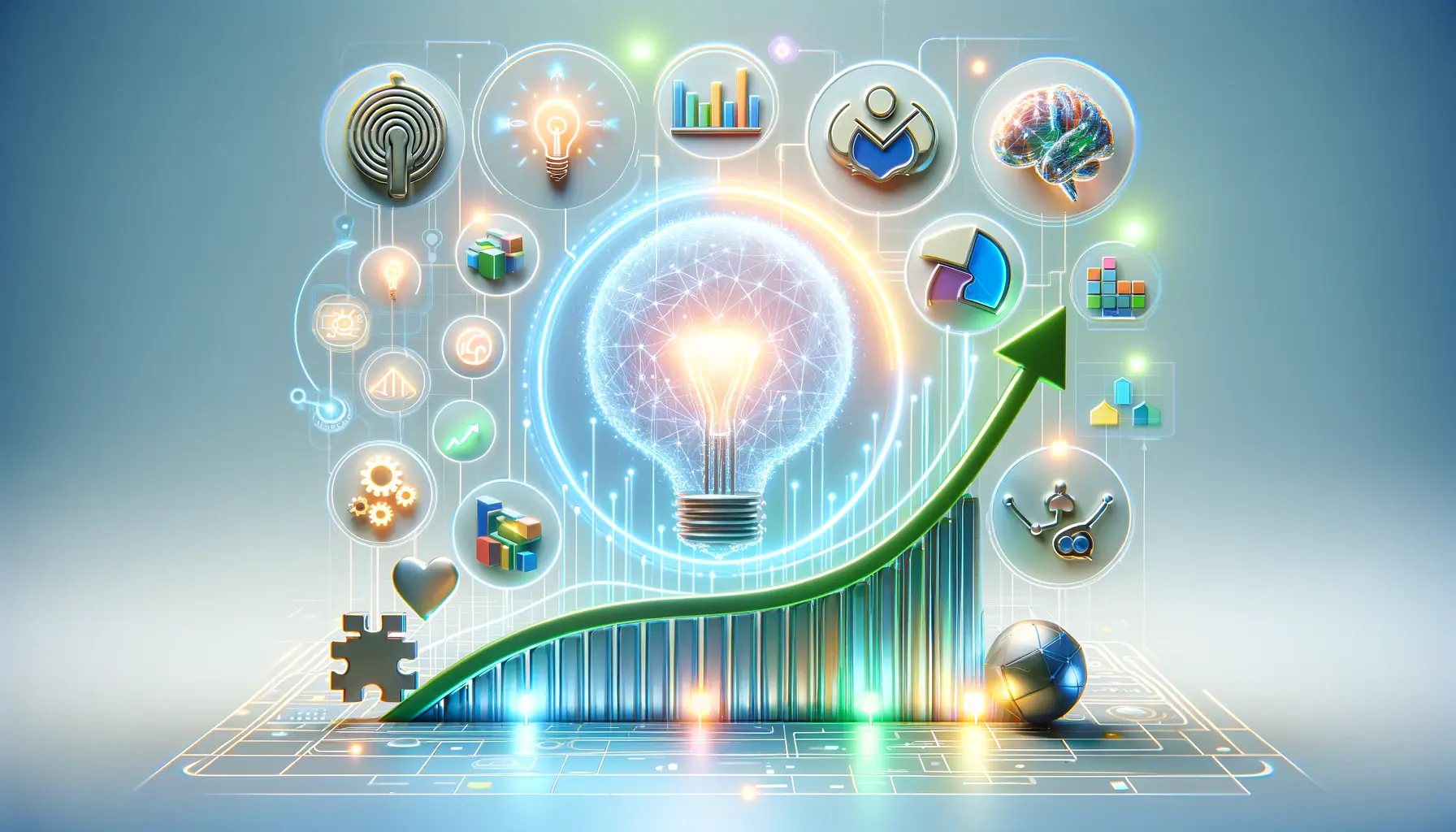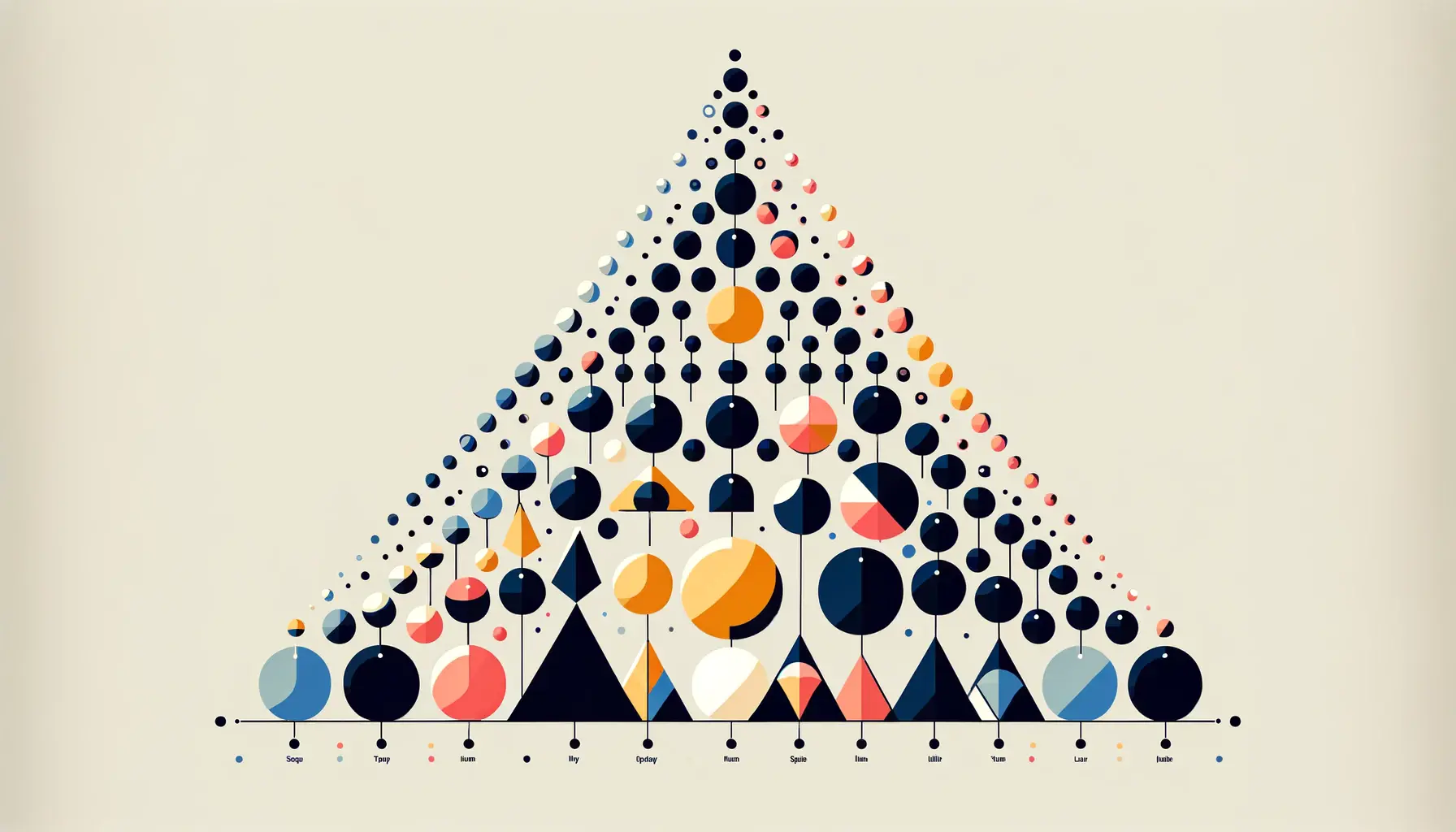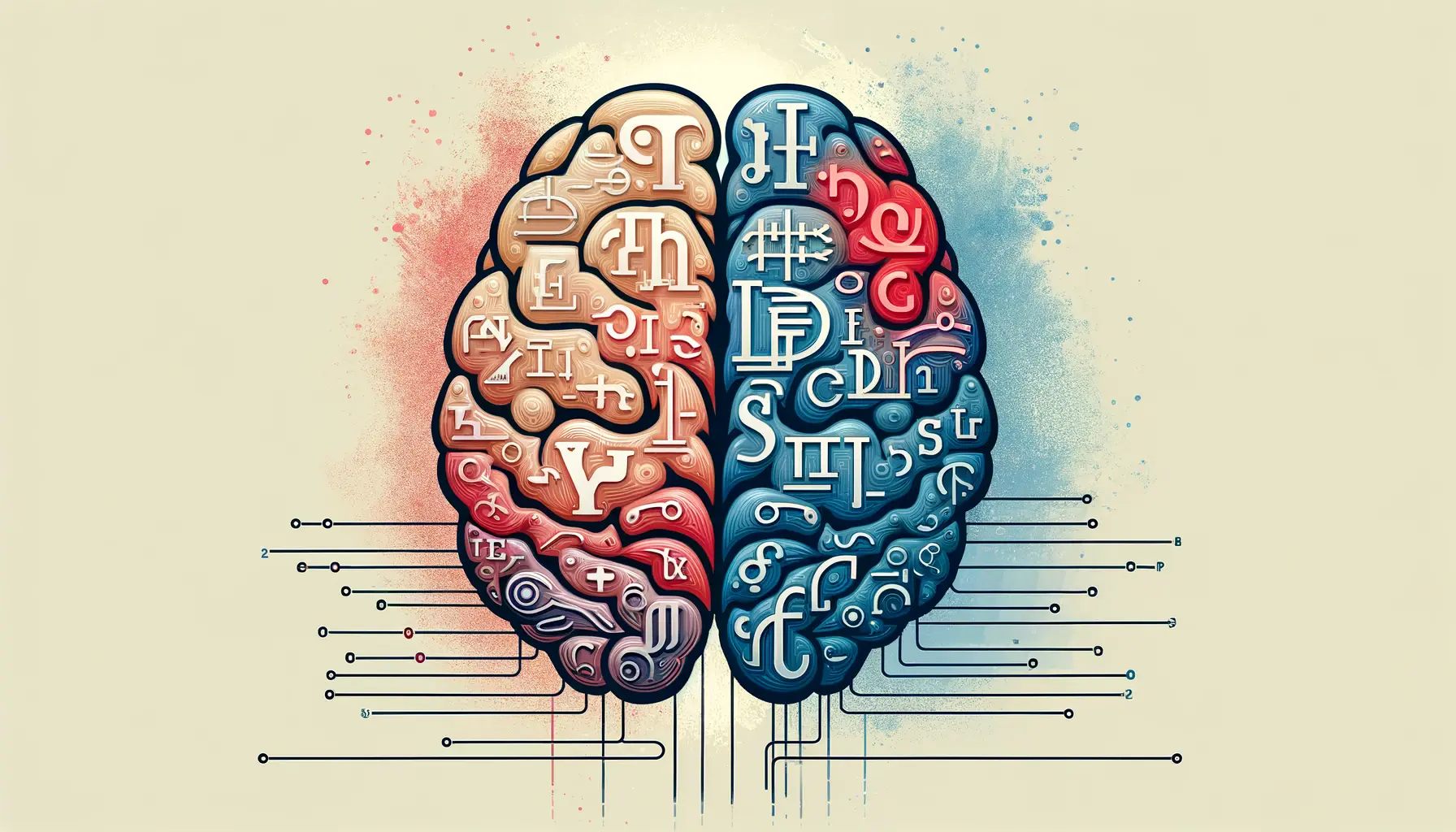In the rapidly evolving landscape of artificial intelligence, one frontier stands out for its unique approach to interaction: humor.
Grok AI, a pioneering force in this domain, has taken the challenge of integrating humor into AI to new heights.
This endeavor is not just about programming a machine to crack jokes; it’s about creating a form of AI that can engage users on a more personal and human level.
The essence of humor, with its nuances and subtleties, presents a formidable challenge for AI developers, yet Grok AI has embarked on this journey with a vision to transform how we interact with machines.
The concept of humor in AI is not merely for entertainment.
It serves a broader purpose of enhancing user engagement, making interactions more enjoyable, and, importantly, breaking down the barriers between human and machine communication.
By incorporating humor, Grok AI aims to create a more relatable and approachable AI, capable of understanding and participating in the intricacies of human emotion and expression.
This initiative marks a significant departure from traditional AI applications, focusing instead on the emotional intelligence of machines and their ability to adapt to the diverse and dynamic nature of human humor.
- Understanding Grok AI’s Approach to Humor
- The Impact of Humor on User Engagement
- Designing Humor for a Global Audience
- Technological Underpinnings of Humor in AI
- Enhancing AI’s Emotional Intelligence Through Humor
- Future Directions for Humor in AI
- Integrating Humor into Various AI Applications
- Embracing Humor: A New Frontier in AI Interaction
- Grok AI Humor FAQs
Understanding Grok AI’s Approach to Humor
The Mechanics of AI-Driven Humor
Grok AI’s approach to integrating humor into its system is a complex process that involves deep learning algorithms and natural language processing (NLP).
These technologies enable the AI to not only recognize linguistic patterns associated with humor but also to generate responses that are contextually appropriate and genuinely funny.
The AI’s ability to learn from a vast array of comedic material—from classic jokes to contemporary satire—allows it to develop a nuanced understanding of what makes something humorous.
Moreover, Grok AI is designed to adapt its humor style based on user interaction, learning from feedback to refine its comedic output.
This personalized approach ensures that the humor is not only relevant but also aligned with the user’s preferences, creating a more engaging and enjoyable experience.
The AI’s capacity to understand and mimic different humor styles, from dry wit to slapstick comedy, showcases its advanced linguistic and cognitive abilities.
Challenges and Innovations
Integrating humor into AI comes with its set of challenges.
One of the primary hurdles is ensuring that the humor is appropriate and does not offend or alienate users.
Grok AI addresses this by incorporating ethical guidelines and sensitivity filters, which help in navigating the fine line between funny and offensive.
Additionally, understanding cultural nuances and context is crucial for humor to land correctly, which Grok AI manages through its advanced NLP capabilities and continuous learning from diverse datasets.
The innovation doesn’t stop at just understanding and generating humor; Grok AI also focuses on timing and delivery, which are essential components of comedic effect.
By analyzing the user’s responses and engagement level, the AI fine-tunes its timing, ensuring that jokes are delivered at the most opportune moments.
This level of sophistication in humor integration represents a significant advancement in AI technology, moving beyond mere information exchange to creating meaningful and enjoyable human-AI interactions.
Grok AI’s humor integration represents a blend of technological sophistication and a deep understanding of human emotion, setting a new standard for engaging AI interactions.
The Impact of Humor on User Engagement
The introduction of humor into AI, particularly through platforms like Grok AI, has a profound impact on user engagement.
By breaking the monotony of traditional AI interactions, humor adds a layer of warmth and personality that significantly enhances the user experience.
This section delves into the various ways in which humor, as integrated by Grok AI, fosters a more engaging and satisfying interaction between humans and artificial intelligence.
At its core, the use of humor in AI interactions serves to humanize the technology, making it appear more relatable and less intimidating to users.
This humanization process is crucial in building trust and comfort, encouraging users to interact more freely and openly with the AI.
The following points highlight the key impacts of humor on user engagement:
- Increased Interaction Time: Users are more likely to spend time interacting with an AI that can engage them on a more personal and entertaining level. Humor keeps the conversation interesting and unpredictable, leading to longer and more frequent interactions.
- Enhanced User Satisfaction: The ability of Grok AI to deliver humor that resonates with the user’s personal taste contributes significantly to user satisfaction. A positive and enjoyable interaction experience increases the likelihood of users returning to the platform.
- Improved Emotional Connection: Humor has the power to evoke emotions and create a sense of connection. When users find an AI capable of making them laugh or smile, it fosters a bond that transcends the typical user-machine relationship.
- Reduction in User Frustration: In scenarios where users might typically feel frustrated or impatient, humor can serve as a buffer that mitigates negative emotions. A well-timed joke or witty remark can transform a potentially stressful situation into a lighter, more manageable experience.
The strategic use of humor by Grok AI not only enhances the quality of interactions but also plays a pivotal role in redefining the boundaries of AI capabilities.
By prioritizing emotional intelligence and the ability to engage users in a meaningful way, Grok AI sets a new precedent for the future of human-AI interaction.
Incorporating humor into AI challenges the conventional view of artificial intelligence, presenting it not just as a tool for efficiency but as a companion capable of providing joy and laughter.
Designing Humor for a Global Audience
Creating an AI like Grok that can effectively use humor with a global audience presents unique challenges and considerations.
Humor is deeply cultural, with jokes that resonate in one region potentially falling flat or even offending in another.
Grok AI’s developers have tackled this issue head-on, employing strategies to ensure that its humor is as universally relatable and appropriate as possible.
Cultural Sensitivity and Localization
One of the key strategies involves cultural sensitivity and localization efforts.
Grok AI uses sophisticated algorithms to detect the user’s cultural context and adjust its humor accordingly.
This adaptability is crucial for avoiding cultural misunderstandings and ensuring that the humor is both appropriate and engaging for users from diverse backgrounds.
Moreover, Grok AI continuously learns from user interactions, which helps in refining its understanding of what is considered humorous in different cultures.
This learning process is supported by a vast database of humor styles and preferences, categorized by geographical and cultural markers.
Language and Semantic Challenges
Language plays a significant role in humor, with puns, wordplay, and linguistic nuances often lost in translation.
Grok AI addresses this challenge by employing advanced natural language processing techniques that can understand and generate humor that is linguistically tailored to the user’s language.
This includes recognizing idioms, slang, and other language-specific humor elements.
The AI also takes into account the semantic context of conversations to ensure that its humorous contributions are relevant and well-timed.
This sensitivity to the nuances of language and context helps Grok AI navigate the complex landscape of global humor effectively.
Adaptive Humor Algorithms
Grok AI’s humor is powered by adaptive algorithms that learn from each interaction, allowing the AI to refine its sense of humor over time.
These algorithms analyze feedback from users to understand which jokes land well and which do not, adjusting future humor output to better match the user’s preferences and cultural context.
The use of adaptive algorithms ensures that Grok AI’s humor remains dynamic and evolves with changing cultural trends and linguistic shifts.
This approach not only enhances the user experience but also contributes to the AI’s ability to engage with a global audience in a meaningful and respectful manner.
Grok AI’s commitment to cultural sensitivity, language understanding, and adaptive learning underscores its innovative approach to global humor, setting a new standard for international AI interactions.
Technological Underpinnings of Humor in AI
The integration of humor into AI, as exemplified by Grok AI, is underpinned by a complex array of technological innovations.
These technologies not only enable the AI to understand and generate humor but also to do so in a way that feels natural and engaging to users.
This section explores the key technological components that make AI-driven humor possible.
Natural Language Processing (NLP)
At the heart of Grok AI’s ability to comprehend and produce humor is advanced natural language processing.
NLP allows the AI to parse language, understand context, and recognize the linguistic structures that signify humor.
Key NLP techniques used include:
- Semantic analysis to grasp the meanings behind words and phrases.
- Syntactic analysis to understand sentence structure and how it contributes to humor.
- Pragmatic analysis to interpret language use in context, crucial for understanding situational humor and sarcasm.
Machine Learning and Pattern Recognition
Machine learning algorithms are crucial for teaching Grok AI about different humor patterns and styles.
Through exposure to a vast dataset of humorous content, the AI learns to recognize what makes something funny.
This learning process involves:
- Identifying patterns in joke structures and comedic timing.
- Learning from user feedback to refine its humor generation algorithms.
- Adapting to individual user preferences for personalized humor experiences.
Data Analytics and User Feedback
Data analytics play a pivotal role in shaping the humor capabilities of Grok AI.
By analyzing user interactions and feedback, the AI can continuously improve its humor delivery.
This iterative process includes:
- Gathering and analyzing user responses to jokes and humorous content.
- Adjusting humor algorithms based on what works well with specific audiences.
- Enhancing the personalization of humor to better align with user preferences and cultural contexts.
These technological foundations enable Grok AI not just to mimic human humor but to do so in a way that is dynamic, responsive, and continually evolving.
The combination of NLP, machine learning, and data analytics ensures that the AI’s humor remains fresh, relevant, and engaging, thereby enhancing the overall user experience.
The technological sophistication behind Grok AI’s humor capabilities highlights the potential of AI to not only understand human language but to engage with it in deeply creative and emotionally resonant ways.
Enhancing AI’s Emotional Intelligence Through Humor
The integration of humor into AI systems like Grok AI represents a significant leap forward in the development of emotionally intelligent machines.
Emotional intelligence in AI refers to the system’s ability to recognize, interpret, and respond to human emotions in a way that is both appropriate and effective.
By incorporating humor, AI can engage with users on a more personal and empathetic level, fostering a deeper connection and enhancing the overall interaction experience.
Recognizing and Responding to Emotional Cues
Grok AI’s humor capabilities are closely tied to its emotional intelligence.
The system is designed to recognize emotional cues in user interactions, such as joy, frustration, or boredom, and respond with humor that is tailored to the user’s current emotional state.
This responsiveness to emotional cues is facilitated by:
- Advanced sentiment analysis algorithms that interpret the emotional tone of user inputs.
- Contextual understanding that allows the AI to discern the appropriate moments for humor.
- Adaptive learning mechanisms that refine the AI’s responses based on user feedback, enhancing its ability to connect emotionally over time.
Building Trust and Relatability
The use of humor by Grok AI plays a crucial role in building trust and relatability between the AI and its users.
Humor, by its very nature, requires a level of understanding and empathy that users often do not expect from machines.
When AI successfully employs humor, it signals to users that the system is not just an impersonal tool but a relatable entity capable of understanding and participating in the complexities of human interaction.
This relatability is achieved through:
- Personalized humor that reflects the user’s preferences and experiences.
- Timely and contextually appropriate humor that enhances the relevance of the AI’s responses.
- An ongoing dialogue that adapts and evolves based on the user’s interactions, further personalizing the experience.
By enhancing its emotional intelligence through humor, Grok AI not only improves the quality of its interactions but also paves the way for more nuanced and meaningful human-AI relationships.
This advancement in AI development underscores the potential for machines to understand and engage with human emotions in a way that enriches the user experience.
The integration of humor into AI like Grok AI highlights the evolving capabilities of artificial intelligence to not just process information but to connect with humans on an emotional level.
Future Directions for Humor in AI
The exploration of humor in AI, as demonstrated by initiatives like Grok AI, opens up new avenues for the development of artificial intelligence.
As technology advances, the potential for AI to not only understand but also creatively engage with humor presents exciting possibilities for the future.
This section outlines the prospective directions for the integration of humor in AI and its implications for human-AI interaction.
Expanding the Range of Humor
As AI technology evolves, we can anticipate a broadening in the range and sophistication of humor AI systems like Grok can produce.
Future developments may include:
- Greater diversity in humor styles, allowing AI to cater to a wider array of personal preferences and cultural backgrounds.
- Enhanced understanding of context and timing, enabling AI to deliver humor that is not only funny but also deeply relevant to the situation at hand.
- Improved adaptability, with AI systems learning from a broader spectrum of human interactions to refine their humor algorithms continuously.
Deepening Emotional Engagement
The integration of humor is just one aspect of AI’s potential for emotional engagement.
Looking forward, AI could become even more adept at recognizing and responding to a wide range of human emotions, leading to:
- More empathetic AI that can offer support, encouragement, or even comfort to users, based on their emotional state.
- AI systems that can participate in and facilitate more complex emotional interactions, contributing to mental and emotional well-being.
- The development of AI companions that can serve not just as assistants but as sources of emotional support and engagement.
Challenges and Ethical Considerations
As AI’s capability to use humor and engage emotionally with users advances, it will also be essential to navigate the associated challenges and ethical considerations, including:
- Ensuring that AI respects cultural sensitivities and personal boundaries, avoiding humor that could be offensive or inappropriate.
- Maintaining transparency about AI’s capabilities and limitations, particularly in understanding and responding to human emotions.
- Addressing concerns about dependency on AI for emotional interaction, ensuring that AI complements rather than replaces human relationships.
The future of humor in AI holds the promise of more engaging, empathetic, and nuanced interactions between humans and machines.
As we venture into this uncharted territory, the potential for AI to enrich our lives with laughter and emotional connection offers a glimpse into a future where technology truly understands the human experience.
The exploration of humor in AI not only enhances the interaction experience but also serves as a stepping stone towards more emotionally intelligent and empathetic artificial intelligence.
Integrating Humor into Various AI Applications
The incorporation of humor into AI, as exemplified by Grok AI, is not limited to conversational agents or chatbots alone.
The potential applications of humor-enhanced AI span a wide range of fields, from education and healthcare to customer service and entertainment.
This broad applicability underscores the versatility of humor as a tool for improving interaction and engagement across various domains.
Here, we explore how humor can be integrated into different AI applications, enhancing both functionality and user experience.
Educational Tools and Platforms
In the realm of education, AI can leverage humor to make learning more engaging and enjoyable for students.
By incorporating jokes or humorous content relevant to the subject matter, educational AI tools can:
- Boost student engagement and motivation.
- Facilitate a more relaxed and enjoyable learning environment.
- Enhance retention of information through the use of humor-related mnemonics and examples.
Healthcare and Therapy
AI applications in healthcare and therapy can use humor to support patient care and mental health interventions.
Humor can serve as a therapeutic tool, helping to:
- Reduce anxiety and stress in patients.
- Improve the patient-practitioner relationship by breaking down barriers.
- Support mental health treatments by incorporating humor into therapy sessions, aiding in emotional regulation and resilience building.
Customer Service and Support
Customer service AI, including chatbots and virtual assistants, can employ humor to enhance customer interactions.
By adding a touch of humor to conversations, these AI systems can:
- Make customer service interactions more pleasant and memorable.
- Diffuse tense situations or complaints with appropriate humor.
- Personalize the customer experience, making the brand more relatable and approachable.
Entertainment and Content Creation
In the entertainment industry, AI can utilize humor to create or curate content that resonates with audiences.
This includes:
- Generating humorous content for social media platforms.
- Assisting in the writing process for comedies, sketches, and other entertainment formats.
- Curating personalized entertainment recommendations with a humorous twist.
The integration of humor into AI applications across these diverse fields not only enhances the user experience but also demonstrates the transformative potential of humor in technology.
By making AI interactions more human-like and enjoyable, humor serves as a bridge between the capabilities of artificial intelligence and the complexities of human emotion and social interaction.
Assuming that humor is a trivial addition to AI undermines its potential to significantly improve engagement, emotional connection, and the overall effectiveness of AI applications in various sectors.
Embracing Humor: A New Frontier in AI Interaction
The journey of integrating humor into AI, as illustrated by the development and application of Grok AI, represents a significant leap towards creating more engaging, relatable, and emotionally intelligent artificial intelligence.
This exploration into the realm of humor has not only showcased the potential for AI to transcend its traditional boundaries but also highlighted the importance of emotional connection in human-AI interactions.
As we have seen, the implications of this endeavor extend far beyond mere entertainment, touching on aspects of education, healthcare, customer service, and more.
The Transformative Power of Humor in AI
Humor, by its very nature, is a uniquely human trait, embodying the complexities of language, culture, and emotion.
Grok AI’s ability to grasp and generate humor signifies a monumental step forward in AI’s evolution, moving towards systems that can understand and mimic the intricacies of human behavior and interaction.
This capability not only enhances the user experience by making interactions more enjoyable and engaging but also serves to humanize AI, fostering a deeper sense of connection and trust between humans and machines.
Future Prospects and Ethical Considerations
As we look to the future, the integration of humor into AI opens up a world of possibilities for creating more sophisticated, empathetic, and intuitive AI systems.
However, this journey also brings to light important ethical considerations and challenges, particularly regarding cultural sensitivity, appropriateness, and the potential for over-reliance on AI for emotional interaction.
Addressing these challenges head-on is crucial for ensuring that the development of humor in AI continues to benefit society in positive and meaningful ways.
- The need for ongoing research and development to refine AI’s understanding of humor and its application across diverse cultural and social contexts.
- The importance of ethical guidelines and frameworks to govern the use of humor in AI, ensuring it remains respectful, appropriate, and inclusive.
- The potential for humor-enhanced AI to contribute to mental health and well-being, offering new avenues for therapy and support.
In conclusion, the integration of humor into AI, exemplified by Grok AI, marks a pivotal moment in the quest to create more human-like, emotionally intelligent artificial intelligence.
This endeavor not only enriches the user experience but also paves the way for a future where AI can truly understand and engage with the full spectrum of human emotions.
As we continue to explore this new frontier, the promise of AI that can laugh with us, learn from us, and grow with us offers a glimpse into a future filled with potential for deeper, more meaningful human-machine partnerships.
Grok AI Humor FAQs
Explore the most common queries about the humorous side of artificial intelligence with Grok AI.
Grok AI’s humor is unique because it combines advanced NLP with machine learning to tailor jokes and witty responses to individual user preferences and contexts.
Yes, Grok AI is designed to recognize and appropriately respond to sarcasm, thanks to its sophisticated natural language processing and contextual understanding capabilities.
Grok AI adapts its humor to different cultures through localization efforts, sensitivity filters, and continuous learning from a diverse range of interactions.
Grok AI employs ethical guidelines and sensitivity filters to ensure its humor remains appropriate and respectful across various contexts and cultures.
Users can influence Grok AI’s humor style through their interactions and feedback, allowing the AI to learn and adapt to their personal preferences over time.
Yes, Grok AI can use humor in professional settings, carefully calibrated to maintain appropriateness and enhance engagement without compromising professionalism.
Humor enhances Grok AI’s user engagement by making interactions more enjoyable, relatable, and memorable, fostering a deeper connection between the AI and its users.
Future developments for humor in Grok AI include expanding the range of humor styles, improving understanding of cultural nuances, and enhancing emotional intelligence.
